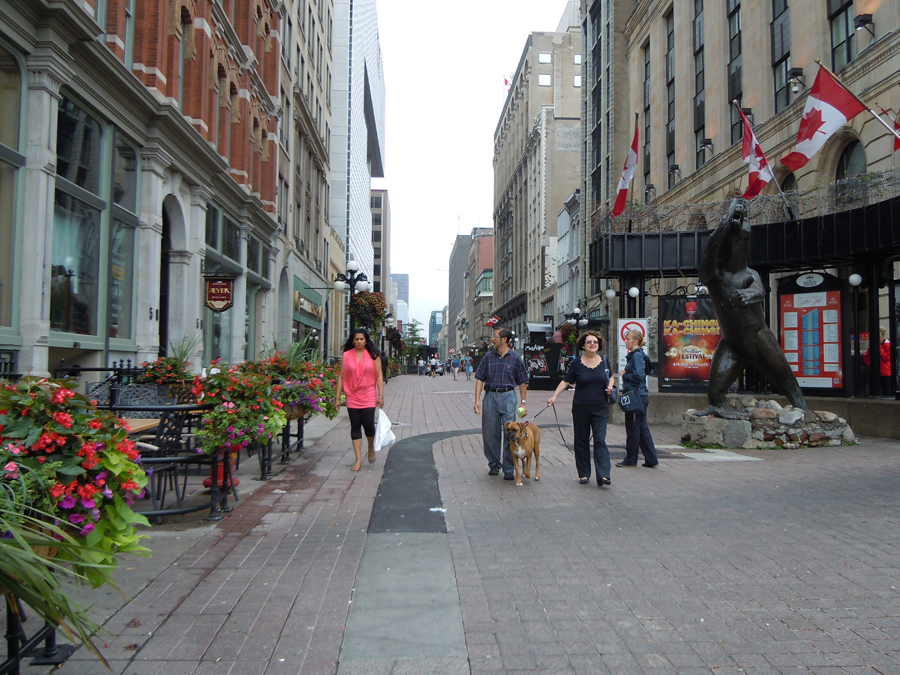A Placemaking Journal
Ottawa: Lessons from great Canadian urbanism
Ottawa celebrates Canada’s cultural mosaic, its urbanism full of delight and engagement. As with most North American cities, its oldest neighbourhoods have positive lessons for urban design today. This is because much of what makes Ottawa character delightful is illegal in the development bylaws that govern its more auto-centric outskirts. On a recent visit, I was inspired by Centretown, The Glebe, Sandy Hill, Byward Market, Lowertown, New Edinburgh, Rockcliffe Park, and of course, Parliament Hill.
As the final in a series of three collections of insights from some great Canadian urbanism, I’m tempted to pull out images from other Canadian cities, and see what they have to say. But don’t worry, I’ll let my fellow PlaceShakers have the Monday spots for awhile. Your insights welcome in the comments below, or if you missed them, on the Montreal and Mont-Tremblant segments.
The Byward Market
One of Canada’s oldest and largest public markets, the Byward Market is a short walk from Parliament Hill and the heart of Ottawa. Planned by the builder of the Rideau Canal, Colonel John By, the market anchors a great neighbourhood.

Canal Urbanism
The Rideau Canal connects Ottawa and Kingston with 202 kilometers of navigable waterway, and is a spectacular UNESCO World Heritage Site. As the oldest operating canal in North America, it was originally designed as a defense route against the US. The biggest urban design lessons from both the Rideau Canal and Ottawa River aren’t defensive, though. Instead, they demonstrate the great value of keeping waterways as public property in the city center, providing a stellar parks and trails system that hosts active transportation and entertainment year round. Other places seeking to enable similar public space will find inspiration in the form-based development bylaw of Dan Bartman’s Canal Urbanism SmartCode Module (3 mb PDF).

Public Art
The prodigious National Gallery of Canada significantly elevates public art, both on its grounds and throughout the city. The National Capital Commission furthers the dialogue with StreetSmART and Decoding Art aps.

Urban Fabric
We talk a lot on PlaceShakers about extracting the DNA of place and allowing it by right because much of what makes up the urban fabric of great places isn’t legal anymore. Here in Ottawa, much of that is the vertical mixed use, build-to-lines instead of suburban setbacks, streets that have gone on diets to make room for on-street parking and cyclists, and careful thought to how the buildings meet the street. Civic spaces take up centre stage with gracious architecture and ample urbanism.



Cottage Living Comes to the City
Last Monday we discussed Canadians and their affinity for the simple pleasures of cottage living. Ottawa has a great collection of cottages offering a more affordable option to smaller households.
Inspiring Duplexes
Capital cities aren’t particularly known for their affordability, particularly in neighbourhoods easily walkable to downtown. Ottawa’s answer to that is an exemplary collection of duplexes and mews units along what you might otherwise think of as rear lanes.
Cycling City?
While Ottawa has the second highest percentage of residents who cycle to work in Canada –almost 3%– the cycling infrastructure is not quite up to Montreal standards. Fueled by the four universities, a network of serious curb-separated bike lanes, and popular bike rentals, Montreal has more of a cycling culture. However, unlike in Montreal, I could actually locate a bike to rent in Ottawa, and had a great time touring neighbourhoods and riding along the canal. The one time I felt unsafe cycling was on my way back into downtown, where the series of “Share the Road” billboards didn’t seem to help matters. Cities contemplating solutions to similar challenges will find helpful Mike Lydon’s Bicycling SmartCode Module (4 mb PDF).

–Hazel Borys
The urban lessons go on and on. In fact, this post is part of a three part series on Canadian urbanism. Read the whole thing:
Montreal: Lessons from great Canadian urbanism
Mont-Tremblant: Cottage Living in the Canadian Shield
Ottawa: Lessons from great Canadian urbanism
If PlaceShakers is our soapbox, our Facebook page is where we step down, grab a drink and enjoy a little conversation. Looking for a heads-up on the latest community-building news and perspective from around the web? Click through and “Like” us and we’ll keep you in the loop.













































